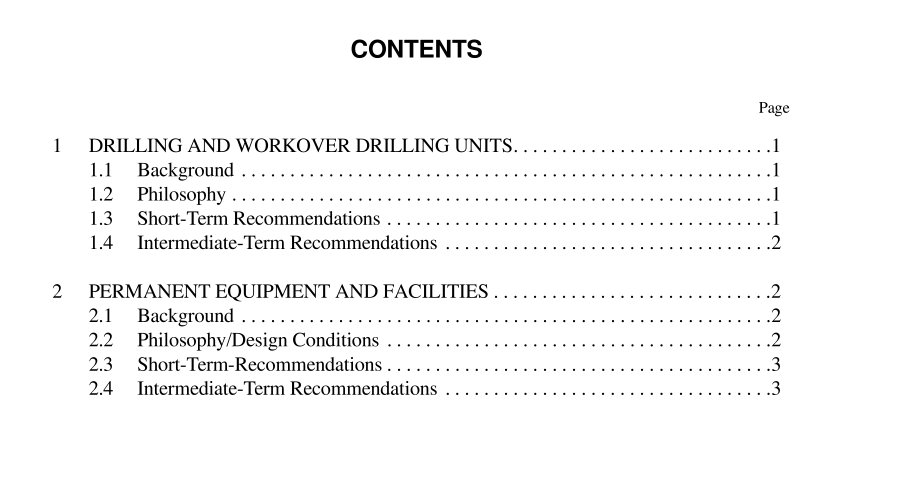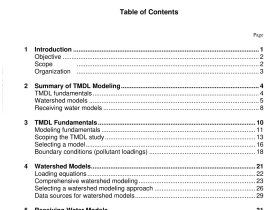API Bull 2TD pdf download

API Bull 2TD pdf download.Guidelines for Tie-downs on Offshore Production Facilities for Hurricane Season
1 Drilling and Workover Drilling Units
1.1 BACKGROUND The oil and gas industry has experienced rig failures and movement of rig components during recent hurricanes in the Gulf of Mexico. Some, if not all, of the failures are attributable to the tie-down components. Occurrences on both fixed and floating plat- forms have resulted in significant platform damage as well as lost and/or deferred production. Recent experience shows that enhancements to current industry practice can improve tie-down performance during hurricanes. 1.2 PHILOSOPHY 1.2.1 Applicability This document addresses situations where failure of a drilling or workover rig would result in significant damage to the platform or adjacent infrastructure. Generally, this would include any facility designated as having a high or medium consequence of fail- ure as defined by API RP2A. In other situations, a risk-based operational decision process should be followed. Situations that might allow deviation from the recommendations below include drilling operations in the non-hurricane season or the use of light-weight workover masts on shallow water platforms.1.2.2 Design Conditions Drilling rig tie-downs to the platform and between drilling components are critical structural components and should have the same, or higher, level of design, material traceability, quality assurance, maintenance, and documentation as other critical struc- tural components. Primary rig and substructure tie-downs should be designed or assessed for location-specific loading conditions (environmental and dynamic) consistent with those utilized in the facility structural design and should be approved by an engineer experienced and qualified in offshore structural engineering. For the same design environment, wind gust and height factors appropriate for the derrick and substructure may be higher than those used for designing the topside as a whole, and the short-term extremes will be much higher than the average loadings used in combination with wave forces for jacket or mooring design. Guidance in wind codes supports the use of 5-to 15-second gust factors for the design of such components. Dynamic accelerations and tilting of the platform topside should also be considered, again at the extreme (not RMS) level. Rigid body (quasi-static) analysis of the rig packages themselves may be used as a first approximation.
2 Permanent Equipment and Facilities
2.1 BACKGROUND Permanent equipment, quarters, and helidecks also suffered severe damage due to tie-down failure during the recent Gulf of Mex- ico hurricanes. This resulted in a significant amount of damage as well as lost and/or deferred production. Recent experience shows that enhancements to current industry practice can improve tie-down performance during hurricanes. 2.2 PHILOSOPHY/DESIGN CONDITIONS Tie-downs of permanent equipment and facilities to the platform are critical structural components and should have the same, or higher, level of design, quality assurance, maintenance, and documentation as other critical structural components.Tie-downs should be designed or assessed for location-specific loading conditions (environmental and dynamic) consistent with those utilized in the facility structural design and should be approved by an engineer experienced and qualified in offshore struc- tural engineering. Wind gust and height factors appropriate for the tie-downs may be higher than those used for designing the topside as a whole, and the short-term extremes will be much higher than the average loadings used in combination with wave forces for jacket or mooring design. Guidance in wind codes supports the use of 5-to 15-second gust factors for the design of such components. Dynamic accelerations and tilting of the platform topside should also be considered, again at the extreme (not RMS) level. Rigid body (quasi-static) analysis of the rig packages themselves may be used as a first approximation.









